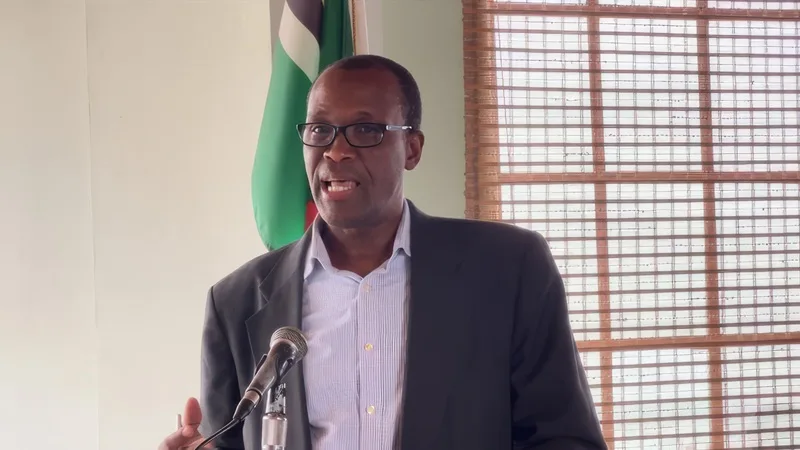Economic Diversification in Dominica

As national development evolves, both government and private sector actors guide progress toward innovation, with economic diversification in Dominica now at the centre of long-term strategic planning. This transition is motivated by decades of lessons arising from structural dependency, fragile export markets, and repeated natural disasters that disrupted traditional sectors. The island’s geography, fertile ecosystems and community-based production patterns have long offered potential for a broad economic base, but diversification gained momentum particularly after the erosion of the banana trade arrangement and the economic shocks of major storms.
Diversification now spans agriculture, tourism, digital services, renewable energy, the creative sector, construction, financial services, and the wider clusters supported by national resilience planning. By opening new lines of economic activity, Dominica aims to stabilise income flows, expand employment choices, strengthen export potential and improve living standards across all parishes. This approach also aligns naturally with national policies tied to the National Resilience Development Strategy 2030, the digital economy agenda, and sector-level reforms across education, housing, climate adaptation and governance.
Historical Drivers Influencing Modern Diversification
Dominica’s earlier dependence on a single dominant export exposed profound vulnerabilities. When preferential banana markets collapsed in the 1990s and early 2000s, communities saw incomes fall sharply. Villages such as Calibishie, Belles, Morne Prosper, Grand Bay, and Wesley relied heavily on banana farming, and the loss of stable, guaranteed markets forced many households to search for alternative livelihoods.
This structural shock coincided with rising global competition, increasing transportation costs and stricter agricultural standards. Farmers began shifting toward root crops, plantains, vegetables, tree crops, agro-forestry and livestock. Over time, this opened pathways for agribusiness value chains, local processing, community-supported agriculture and small-scale export clusters.
Natural disasters have played another defining role. Hurricane Maria (2017) caused extreme damage to agriculture, tourism facilities, fisheries, energy systems and coastal communities. With nearly all agricultural holdings damaged and major hotels closed temporarily, the event confirmed the need to diversify national output so that economic recovery was not dependent on a narrow set of sectors. In the post-Maria era, diversification became one of the guiding directions for national reconstruction, investment planning and sectoral reform.
Government Frameworks Strengthening Sectoral Expansion
The government’s push for broad-based transformation is visible through several strategic documents and institutions that encourage diversification:
- National Resilience Development Strategy 2030 (NRDS)
- National Digital Transformation Strategy 2022-2026
- Economic Diversification Fund (EDF)
- Agriculture modernisation programme
- Tourism revitalisation initiatives
- Climate resilience initiatives and renewable-energy projects
Each of these frameworks promotes specific industries while also improving the enabling environment that businesses need: roads, ICT infrastructure, digital skills, electricity reliability, supportive regulation, climate-resilient building standards, and targeted financing mechanisms.
The Economic Diversification Fund, operating under the Citizenship by Investment Programme, has financed roads, hospitals, housing, hospitality developments, community centres, agro-processing facilities and other infrastructure that support a wider array of economic activity. The fund also supports resilience projects, rural development and investments that indirectly enhance the competitiveness of small businesses throughout the island.
Expanding and Strengthening the Agricultural Economy
Agriculture remains central to Dominica’s identity, but diversification has transformed the sector far beyond traditional export crops. Farmers now cultivate passionfruit, guava, dasheen, sweet potato, tannia, cassava, citrus fruits, avocado, coffee, cocoa, spices and coconut products. These crops feed local consumption, regional markets and agro-processing ventures that create new high-value goods.
Modern agricultural diversification includes:
- Agro-processing clusters producing seasonings, sauces, teas, oils, dried fruits and packaged root crops
- Protected-cultivation systems enabling year-round vegetables and herbs
- Livestock modernisation with improved breeds and feed systems
- Community-supported agriculture promoting farm-tourism links
- Export trials involving cocoa, coffee and essential oils
The Ministry of Agriculture’s partnerships with the World Bank, FAO, IICA, and regional market frameworks support training in post-harvest handling, marketing, organic standards and disaster-resilient farming technologies. This builds technical skills while creating opportunities for rural youth, returning migrants and women farmers.
Evolution of Tourism into a High-Value Sector
Tourism itself is diversifying. Dominica brands itself as the Nature Island, but the modern tourism strategy emphasises high-value experiences, community partnerships, health and wellness, marine activities, cultural heritage and outdoor exploration.
New tourism niches gaining momentum include:
- Eco-lodges and sustainable resorts supported by resilient construction
- Cultural tourism highlighting Kalinago heritage, craft markets and music traditions
- Marine tourism featuring scuba diving, whale watching and coastal kayaking
- Hiking tourism, including the Waitukubuli National Trail and village circuits
- Wellness tourism centred on hot springs, retreats and nature-based therapies
- Community guesthouses, homestays and agricultural-tourism hybrids
Tourism diversification stimulates a range of related industries: transportation, craft production, culinary services, cultural performances, adventure guiding, and small-scale hospitality enterprises.
Strengthening the Digital Economy and Remote Work
A major driver of diversification is the digital economy shift. The National Digital Transformation Strategy outlines a vision of a more connected and modern economy supported by broadband access, online services, digital literacy and remote-work opportunities. This is supported by the World Bank’s Caribbean Digital Transformation Project.
Digital economy expansion includes:
- Remote-work hubs and community resource centres
- Training programmes such as Work Online Dominica, helping citizens become virtual assistants, digital marketers, freelancers and online service providers
- MSME transition to digital accounting, payments, booking systems and e-commerce
- ICT-enabled entrepreneurship, including content creation, web development and digital media services
- Growth of online education, certification and professional-training channels
These developments open opportunities for youth, working mothers, persons with disabilities and residents of rural or high-elevation communities who may not have easy access to physical office spaces.
Renewable-Energy Transition and Resilience-Based Industries
Diversification also depends on transforming the energy sector. Dominica’s geothermal capacity gives the island an opportunity to reduce electricity costs and attract industries that benefit from stable, green energy. The geothermal development project and expansions in hydro, solar and micro-grid systems can support local manufacturing, data services, ICT operations and cold-storage facilities.
Resilience-based industries include:
- Climate-resilient construction
- Energy-efficient housing
- Environmental-monitoring services
- Green engineering and consultancy
- Sustainable fisheries practices
- Waste management solutions
These sectors align with Dominica’s goal of becoming the world’s first climate-resilient nation.
Cultural and Creative Industries as Drivers of Diversification
Creative industries, music, film, visual arts, dance, craft production, traditional storytelling, festivals and digital content represent another growth area. Dominica’s cultural identity provides unique assets: Cadence-Lypso, Bouyon, Creole cuisine, Carnival traditions, Kalinago artistry, and village craft clusters.
Creative industries support diversification by generating employment, attracting cultural tourism, strengthening national branding and providing exportable creative products. Improved digital infrastructure allows artists to distribute music, film and digital artwork globally.
Construction, Manufacturing and Infrastructure Development
The construction sector has grown steadily due to public sector infrastructure, climate-resilient housing, private investment and large hospitality projects. Infrastructure expansion for roads, bridges, ports, airport facilities, and community centres stimulates job creation and lays the groundwork for long-term diversification.
Light manufacturing has potential in areas such as:
- Agro-processing
- Packaged goods
- Craft and artisan production
- Furniture and wood products
- Natural-health products
- Water-bottling and speciality beverages
These industries benefit from renewable energy, tourism linkages, digital tools and improved transportation systems.
Financial Services, Credit Unions and MSME Expansion
Dominica’s cooperative movement forms a strong backbone for diversification. With branches in Roseau, Portsmouth, St. Joseph and the Kalinago Territory, credit unions provide accessible financing for small businesses, farmers, contractors, artisans, taxi operators and village enterprises.
MSME development programmes help entrepreneurs learn budgeting, digital marketing, stock control, procurement, risk management and general business administration. Access to credit, technical support and digital-skills training allows MSMEs to expand into both domestic and regional markets.
Regional and International Partnerships Supporting Diversification
Diversification is strengthened through alliances with:
- OECS economic-integration mechanisms
- CARICOM Single Market and Economy
- World Bank resilience and digital transformation financing
- United Nations agencies supporting climate, youth and development programmes
- FAO / IICA supporting agriculture, agro-processing and food security projects
These partnerships provide technical assistance, funding, policy alignment and access to regional markets for Dominican goods and services.
Future Outlook and National Pathway Forward
Dominica’s diversification strategy promises a broad, adaptable economic base capable of weathering shocks while creating opportunities for future generations. The path forward includes:
- Scaling geothermal and other renewable-energy systems
- Establishing remote-work corridors and digital-services clusters
- Expanding agribusiness exports and modern packaging facilities
- Developing new tourism niches tied to heritage, wellness and culture
- Supporting creative-industry entrepreneurship
- Improving transportation and logistics
- Strengthening data-driven policy systems
- Enhancing climate-resilient infrastructure and service networks
Diversification will continue to shape Dominica’s economic transformation. By connecting rural and urban communities, empowering MSMEs, advancing technological readiness and nurturing cultural strengths, Dominica can build an economy that aligns with its resilience ambitions and national identity.




